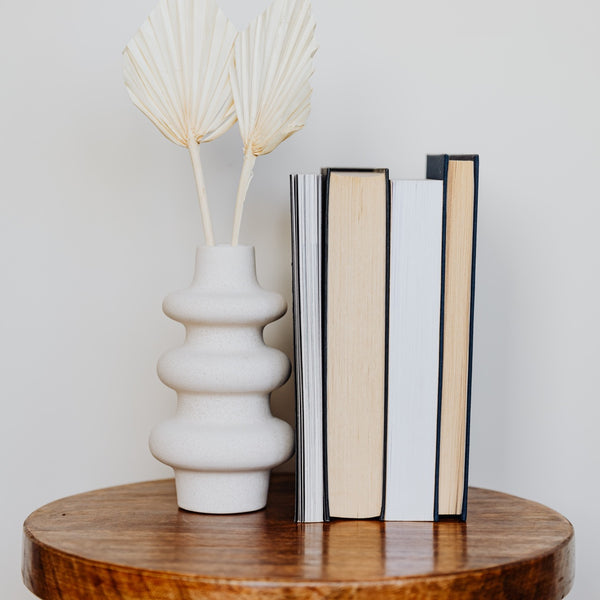Take A Lesson From Actors - Exercises To Increase Mindfulness & Imagination

“All the world's a stage, and all the men and women merely players.” - William Shakespeare, “As You Like it.”

Laughter. Fear. Even tears. Sometimes it’s easier to respond emotionally to a movie than a real life situation. Transported to another world, what began on the page, quickly turns visceral. Of course, these alternate realities wouldn’t exist without a film’s writer and director, skillfully conceptualizing the plot and complex characters. Although, even the most ingenious screenwriter and talented director, require actors to breathe life into the players of their story. A leading actor who brings in a false performance can zap the dramatic tension right out of a story, and cause even a terrific screenplay to fall flat. Whereas, one could argue that a mediocre script could still be made watchable if the performances of its stars are captivating.
When an actor prepares, she aims to recreate life in such vivid detail, each moment appears true to an audience because… to the actor, it is real. Natural seekers, actors are artists who never lose their childlike sense of wonder and inventiveness. Mindfulness is just one of the benefits of their enlightening process.
Around the turn of the century, Russian director and actor, Konstantin Stanislavski, pioneered a radically different approach to acting and storytelling. Grounded in emotional realism, his method directly contradicted the exaggerated acting style which had previously been in fashion. Stanislavski called his groundbreaking training, the “Stanislavski System,” and has referred to it as “the art of experiencing.” Stanislavski viewed self-awareness and understanding as a way to increase one’s natural creativity. Instead of being an elusive gift for a select few, according to Stanislavski, “Talent is nothing but a prolonged period of attention and shortened period of mental assimilation.”
Luckily, you needn’t be a performer to benefit from an actors training and experience its mind/body/spirit effects. For exercises based on Stanislavski’s System, modified to be done by non-actors, read on…
Wakeup Call

When breaking down a script, it’s essential for a performer to define her objectives. Since the script in this case is life, you can do the same thing, any moment of the day. Chose a time and pause… Silently, ask yourself: Who am I? What do I want right now? Why do I want it? How do I plan to make it happen?
It doesn’t matter how subtle or grand your objective is. Give yourself time to check in with your instincts. Listen to your thoughts. Don’t answer quickly. Wait until you become clear. At least 3-5 minutes. Then decide which direction feels right. A fun time to try this is when you’re functioning on autopilot. Simply stop and go within… This deceptively simple exercise can help bring focus, clarity, and naturally strengthen intuition.
Phantom Actions

Pick an everyday task, such as washing dishes, brushing your hair, or teeth. Anything will do. Perform the action with the object. Be grounded in the present. Be acutely aware of each movement. Notice how your senses are engaged. Record each detail with your mind’s eye.
Then, recreate the object with your imagination in intricate detail. Recall not only the size and shape, but texture, weight, and how it feels in your hand. Experience the object with each of your senses. Once the vision is clear, go through the entire action with the imagined object.
Extraordinary Objects

Select an object in your home. It might be an envelope, broom, shoe, book. The more common the better. Forget its true purpose… Meditate on the object for a few moments… Allow yourself to imagine what it might become. When you’re ready, think out of the box. Turn the object in various directions. Wave it around. Examine how it rests in the air. Its color. Weight. Scent… Start to see it new and unusual ways. Nothing is off limits. Invite the ridiculous. There’s no way to do this wrong. What if a book where a placemat? Maybe the book can fly… Could it be a futurist hoverboard? Where might it take you? Let yourself daydream…
A Natural Silence

When Stanislavski famously said, “there are no small parts, only small actors,” it was apparent, he perceived every performer as an integral part of the big picture. While it’s true, words attract attention and convey meaning, the quiet can be underrated; without words to cling to, an actor works just as much, if not more. Also in life, infinite possibilities are born in silence. A universe can live inside a pause… Appreciate its power and beauty.
This exercise can be done in any setting. It needn’t be peaceful. In fact, noise in this case, is not a deterrent. You might seek out an active bustling environment where an assortment of sounds are ping-ponging off one another.
Come to a natural seated or standing position. Take a relaxing breath, then exhale. Keep your eyes open… Allow your listening to run out. Notice each sound, from the quietest sparrow chirp, to the shrillest car horn. Actively expand your awareness… notice and isolate each sound. When you feel like it, let them harmonize. Take your time rediscovering the quiet. Rest in this awareness.
Sensory Work

Take a trip through your imagination and attune to your senses. Close your eyes. Let your breathing be easy and relaxed. Imagine you are outside in the snow… See yourself. What are you wearing? Envision your surroundings. The landscape, street, trees. Where are your feet in relationship to the snow? Are they covered in white, or atop wet slush? How do you feel? Are you warm enough? Are you shivering? Imagine a snowflake falls on the tip of your nose… Stick your tongue out, and taste the snow. What do you smell…? What do you hear? You needn’t use snow. Experiment with different with different kinds of weather, rain, summer sunshine, ect...
In addition to the above exercises, if you don’t already have a Yoga and meditation practice, consider starting one. Not surprisingly, Stanislavski’s notebooks show he was a true believer in the emotional and physical benefits of Hatha Yoga, and would regularly incorporate breathwork and meditation into his actor training. Clearly ahead of his time, Stanislavski’s system ought to be recognized as a whole body/mind and spirit practice. Referencing the benefits of the breath, Stanislavski once insightfully said, “calm breathing—healthy thoughts, healthy body, healthy feelings, easy to focus; wrong rhythm of breathing—disturbed psyche, feelings of pain and total attention deficit.” To further explore the fascinating works of Stanislavski, read his books, “An Actor Prepares, Building a Character,” and “Creating a Role.”



